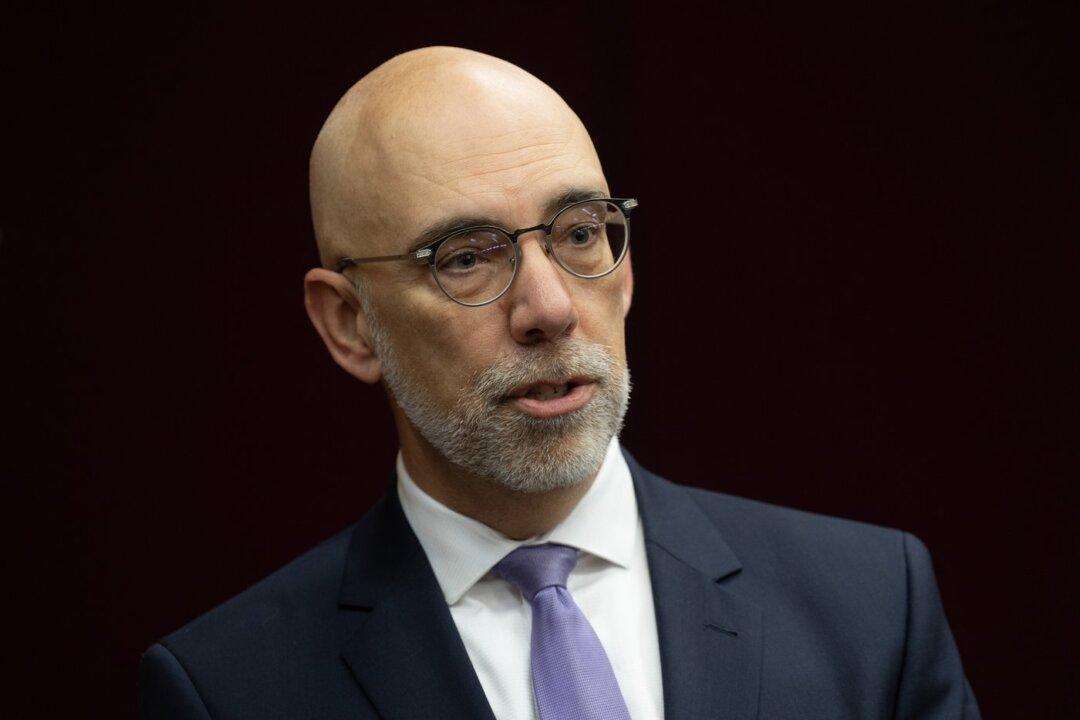Parliamentary Budget Officer Yves Giroux warns that the Canadian economy will see “sluggish” growth in 2024 and that an increase in government spending may necessitate raising taxes.
“The picture for this year in fact is very sluggish growth due to the impact of the monetary policy, the increase in interest rates that we have seen over the last several months, as well as slow economic growth from the consumer side,” Mr. Giroux said during a March 10
interview on CTV News.
Ahead of the
federal budget set to be tabled on April 16, Mr. Giroux said Ottawa’s
goal of keeping Canada’s
deficit at below 1 percent of GDP in 2026
–27 and beyond means it will have little room for new spending. He said that with a current
estimated deficit of 0.8 percent of GDP for that year, there will only be room for around $6 billion to $7 billion in new spending in 2026
–27 without increasing taxes.
“Of course, if the government decides to reduce expenditures in some areas, or increase taxes, it will improve its room. But as things currently stand, there’s not that much room to increase spending without increasing taxes,” he said.
In August 2023, Treasury Board President Anita Anand gave her cabinet colleagues an Oct. 2 deadline to find a combined $15 billion in what was then reported as cuts over five years from their departments’ existing spending plans, according to an Aug. 15, 2023,
Globe & Mail article.
Later that month, Ms. Anand
clarified that this was not about reducing spending but about “refocusing our spending from pandemic-type spending to the broader economic priorities of our country.” She identified those priorities as health care, dental care, the Canada Child Benefit, and $10-a-day child care.
Her request was made against the backdrop of Ottawa’s Budget 2023 promise to reduce overall government spending
by $14.1 billion from 2023 to 2028, and by $4.1 billion annually after that.
Mr. Giroux warned that those cuts are “not sufficient” to simultaneously fund commitments like a federal disability benefit and the pharmacare program for diabetes drugs and contraception currently being discussed, or to meet the NATO defence spending target of 2 percent of GDP annually.
Canada currently spends just under
1.4 percent of its GDP on the military. The Department of National Defence estimates its
costs to be $26.5 billion in 2023
–24.
In terms of the
federal disability benefit, the Parliamentary Budget Office (PBO) in a November 2023 report provided three hypothetical scenarios and estimated that the benefit would cost between $532 million and $5.1 billion in fiscal 2023
–24 and between $2.1 billion and $20.5 billion the following year.
To implement the
pharmacare program, or single-payer universal drug plan, in an October 2023 report the PBO estimated that it would cost the federal and provincial governments combined an extra $11.2 billion in the first year, 2024
–25, increasing to $13.4 billion in 2027
–28.
Deficit
Mr. Giroux told CTV News that “for the next five years, including in the current fiscal year, we expect the deficit to be about $46 billion.”
“That being said, we don’t have any inside information as to what the government is currently doing, or what plans it has for the remainder of the fiscal year,” he added.
He said that the deficit was mostly being driven by increased government spending and the cost of interest on Canada’s national debt.
In a March 5 report on Canada’s
economic and fiscal outlook, Mr. Giroux projected inflation to return to its 2 percent target by the end of 2024 and then to average 1.9 percent over 2025 to 2027. With that expectation, “we expect the Bank of Canada to start lowering its policy rate in April of this year,” the report said.
As widely expected, the central bank announced March 6 that it was
holding its policy rate at 5 percent. The bank said that before it can lower interest rates, it needed to give more time for the current higher rates to do their work to lower inflation.







